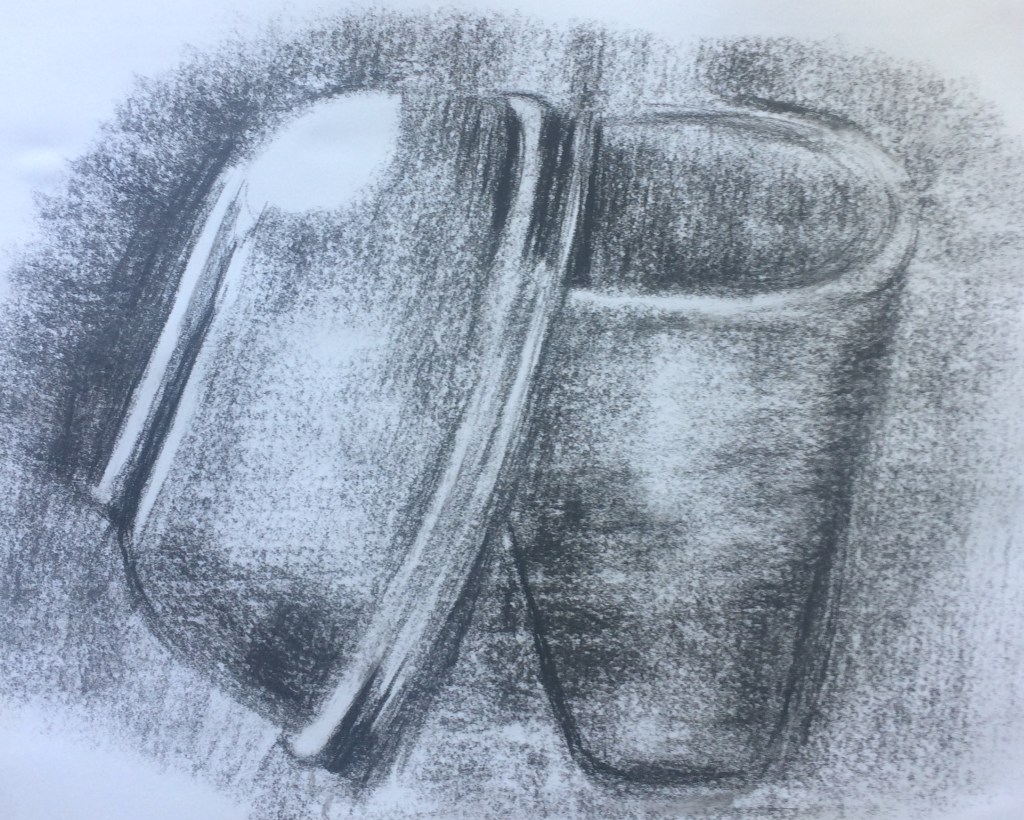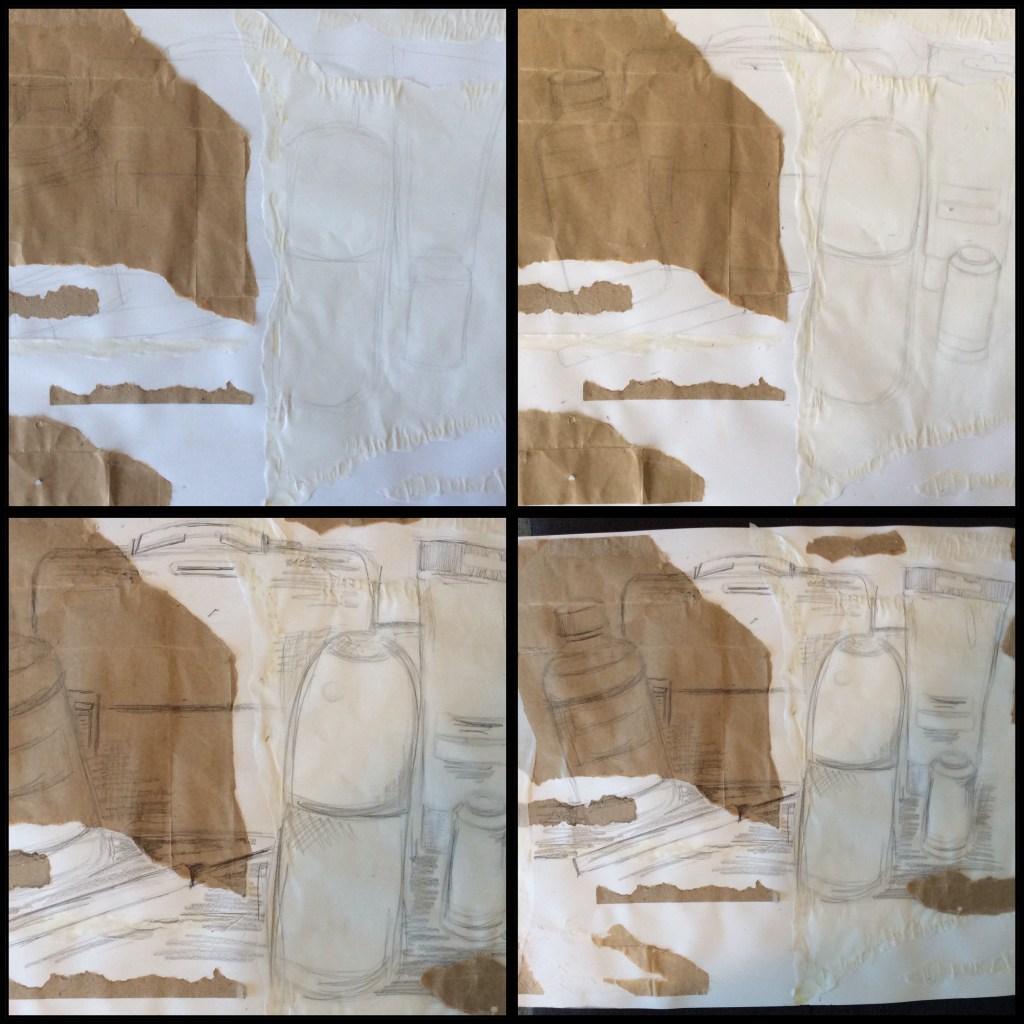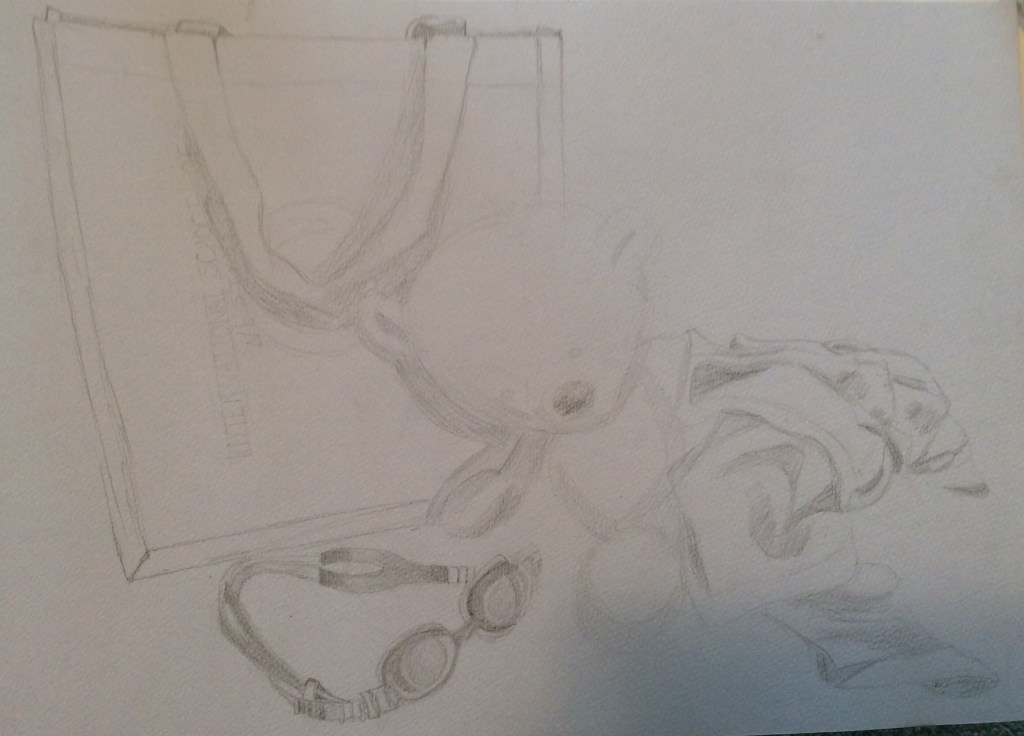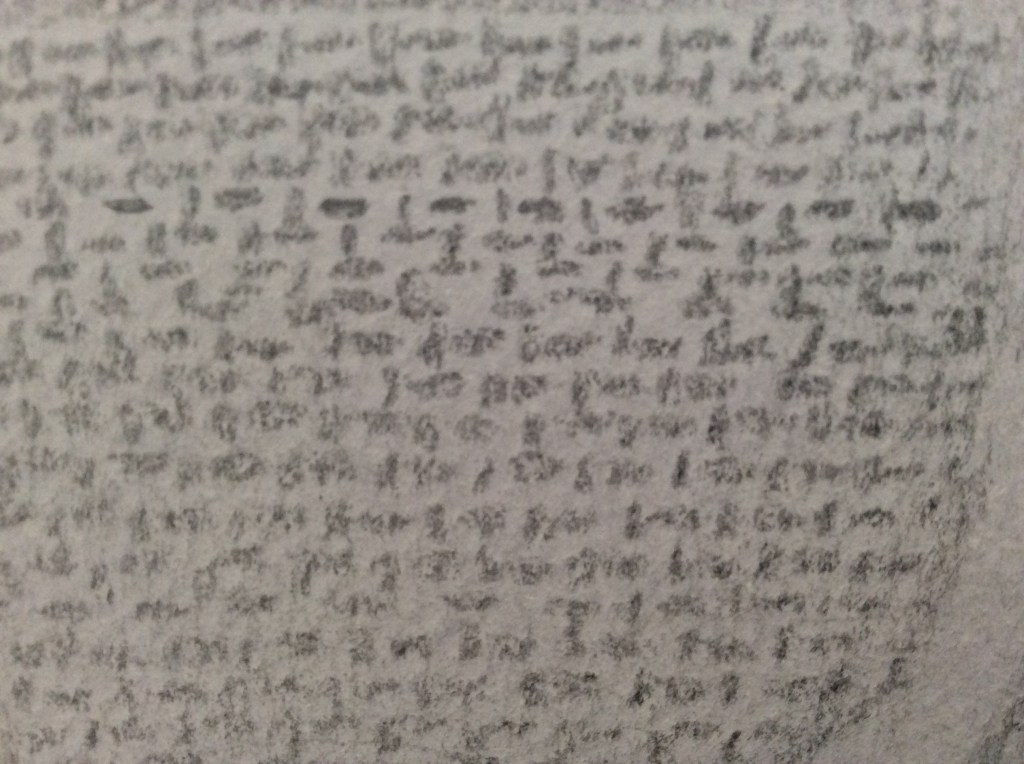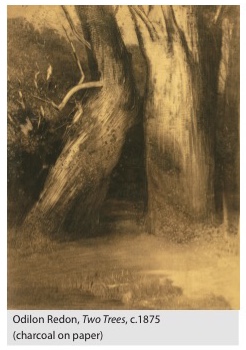For this exercise I was asked to throw a piece of clothing or a length of plain fabric across a chair to make folded and soft layers of fabric and then make two 15 minute sketches, one using line and the other concentrating on tone.
I draped my dressing gown over a kitchen chair. I drew using charcoal on a3 white paper. I started with a quick 15 minute line drawing, I tried to observe the lines of the fabric following the curves, rises and falls.
Because I only spent 15 minutes on my drawing, there will undoubtedly be some inaccuracies, however drawing quickly forced me to concentrate fully on the lines of the objects in front of me and produce a more raw and fluid drawing without worrying about mistakes and inaccuracies.
My next drawing was in tone. I again used charcoal and I again only spent 15 minutes on my drawing. I worked quickly and I tried to identify and emphasise the areas of light and shade. I think I did manage to show the creases and folds in my dressing gown as well as showing the weighty thickness of the fabric. However my drawing is quite unrefined and I think I have overused the charcoal, my drawing may have been more effective if my charcoal use was less heavy and more subtle.
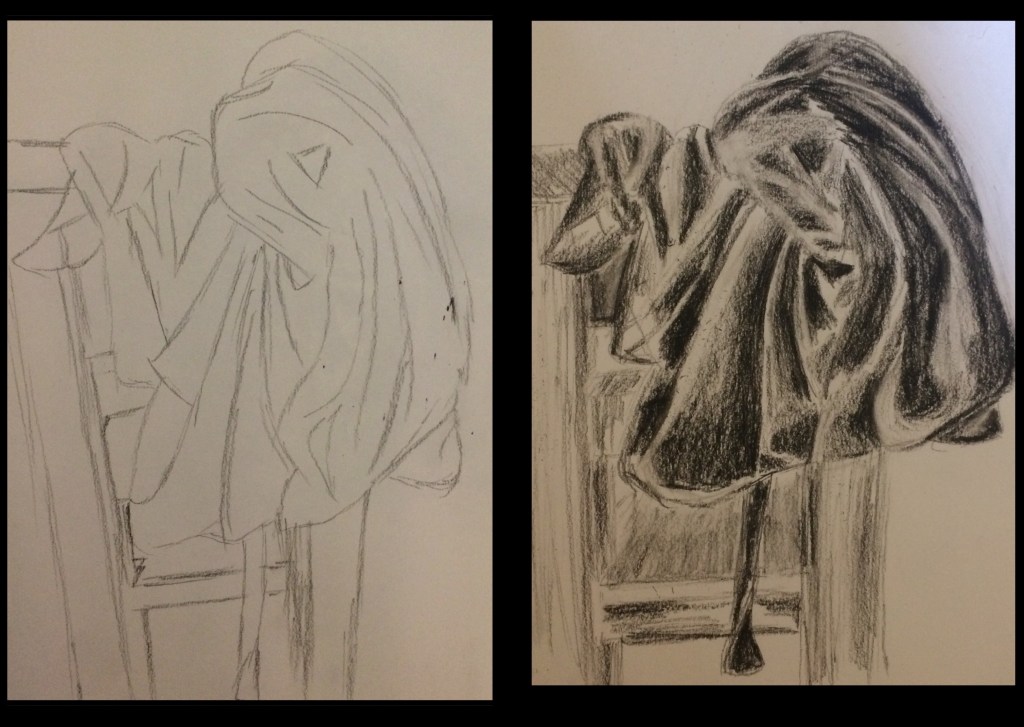
I then divided my page into 12cm squares where I drew five minute sketches of different parts of the fabric. I tried to look at the shapes caused by the folds and I tried to emphasise form by showing areas of light and shade. I used a selection of different media’s including, charcoal, Indian ink, colouring pencils and oil pastels.

I enjoyed doing this exercise as I enjoy working quickly and I enjoyed using a selection of different media’s. I did find it difficult though to create volume in the folds of the fabric and clearly some drawings are more successful than others.
For example my drawing using colouring pencils is quite successful as I can see clearly the folds in the material and where shadow is created. I have also managed to show form through tonal areas. My drawing using purple and yellow pastel paint is less successful though, I think this is mainly because I drew in pastel to start with then I added water to activate the paint! However the colour of the paint seemed to run into each other & I lost the form that I had created.







